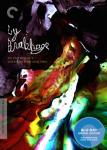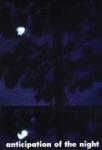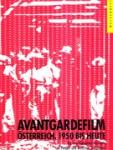Movement as Meaning in Experimental Cinema offers sweeping and cogent arguments as to why analytic philosophers should take experimental cinema seriously as a medium for illuminating mechanisms of meaning in language. Using the analogy of the movie projector, Barnett deconstructs all communication acts into functions of interval, repetition and context. He describes how Wittgenstein's concepts of family resemblance and language games provide a dynamic perspective on the analysis of acts of reference. He then develops a hyper-simplified formula of movement as meaning to discuss, with true equivalence, the process of reference as it occurs in natural language, technical language, poetic language, painting, photography, music, and of course, cinema. Barnett then applies his analytic technique to an original perspective on cine-poetics based on Paul Valery's concept of omnivalence, and to a projection of how this style of analysis, derived from analog cinema, can help us clarify our view of the digital mediasphere and its relation to consciousness. Informed by the philosophy of Quine, Dennett, Merleau-Ponty as well as the later work of Wittgenstein, among others, he uses the film work of Stan Brakhage, Tony Conrad, A.K. Dewdney, Nathaniel Dorsky, Ken Jacobs, Owen Land, Saul Levine, Gregory Markopoulos Michael Snow, and the poetry of Basho, John Cage, John Cayley and Paul Valery to illustrate the power of his unique perspective on meaning.
Table of contents:
Foreword: Where does this book belong?Preface: Arriving at the sceneIntroduction: Two pictures of a rose in the darkPart I: Modes of Perception and Modes of Expression1. First ideas in a new medium: the cinematic suspension of disbelief2. One description of how the mind may move toward understandings3. New paradigms and new expressions4. Theories of meaning – media, messages and how the mind moves5. The relevance of the mechanism – lessons to carry forward from an already obsolete medium6. Frames vs. shots, surface vs. window7. What the surface of the screen can tell us about language8. Language integrates our perceptions as surely as the nervous system integrates our sense data – hallucination or metadata? 9. Letting the mind surround an idea: an introduction to Wittgenstein10. Ascertaining understanding: What one language must evoke, another may stipulate (and vice versa). 11. Dynamic and static theories of meaning12. Color, types of reference and the inveterate narrative13. The polyvalence of the picture14. Meaning and mutual experience – kinds of reference re-described15. What has art got to do with it?16. A whole new way of reading – the surface of the screen and the modulation of self-consciousness17. The anteroom of meaning and our conception of space18. Meaning and mental habits19. Assumed and earned meaning20. The spectrum of shared reference21. The story sequence and the montage – prologue22. When the editor learns about meaning23. Montage and metaphor. 24. The imitation of perceptionPart II: Dynamic and Syntactic Universals25. Non-Verbal Universals26. The polyvalence of the picture and the omnivalence of the movie27. The description of omnivalence as a floating target28. Dynamic universals: beginning, middle and end –a prologue29. Language and the momentum of the body30. Syntactic universals: interval, context and repetition31. The synergy of symmetry32. Sidebar – another parallel model and another speculative future33. Formal references in music and cinema34. The developmental leap – keeping the referent a mystery35. Resemblance and resonance36. The subliminal pull of the flicker37. Aural and visual cadence38. The frame of the experience39. Resonance among frames40. Ancient history – the medium as the model41. Illustration, induction and repetition42. The material and the medium43. Sonics and seamlessness44. The private language machine and the evolution of a medium45. Illusions and ontological linchpins46. Delimiting an audience47. Summarizing the singular window enroute to the panoramic viewPart III: Considering Description48. The world of description49. Recapitulation and prospectus50. Shades of meaning – another perspective on perspective51. Yet another perspective on perspective: metaphors, images and pictures: the linguistic hall of mirrors52. Metaphor, image and brain53. Words are generated; image streams are wrought54. The metrics of vectors and resonances55. Two pictures of a nose in the dark56. An Obligatory sidebar on Eisenstein meets a structural allegory57. Hearing the image and the inherent omnivalence of music58. The organization of space in a model built for sound59. The category across modalities60. Similar to vs. same as – periodicity and category 61. Description, Allegory, the Heuristic Dialectic and a short bridge to the future.Part IV: The Moving Target62. Digital ubiquity – the memosphere & the mediasphere63. Compression and consciousness64. What Medium?65. Indeterminacy of translation revisited and context reconsidered66. The reconfigured attention span67. The synergy of the media sphere68. The search engine, the barker and the editor-in-chief69. A sidebar on consciousness70. So, where is the screen?71. The moving meaning metaphor72. Working the method73. From the grain to the pixel74. beyond the pixel – an overview75. A fond adieuAPPENDIX A:The Paillard Bolex Movie Camera and the J-K optical printerAcknowledgementsBibliographyFilmographyIndex
Reviews:
“Dan Barnett's book is the finest and most crystalline unpacking of experimental, non-narrative cinema I have read in decades. Since experimental cinema is itself a rigorous exploration of form, duration, montage, perception and the music of time, his book is written in dialogue with these experiments. Barnett is a natural born philosopher who brings a wide range of reference (from cognitive science and the theory of perception, language and its philosophy, music, painting and more) to the dialogue, and equally important, the perspective of an artist who has lived within the subtle complexities of experimental film for a lifetime. What emerges is both a wonderful study of filmmakers, and a vivid rethinking of what film is.” – Daniel Herwitz, Fredric Huetwell Professor of Comparative Literature, Philosophy, and History of Art, University of Michigan, USA and author of The Star as Icon
“Daniel Barnett's Movement as Meaning in Experimental Cinema deploys a multifaceted notion of meaning formation as a conceptual device to aid in formulating his understanding of films as articulated streams of images and sounds that challenge the mind to parse them and to grasp their syntactical regularities. This approach highlights a work's pictorial, rhythmical, and temporal (recurrence) features and its abstract aural-visual relations, rather than its use of literary or theatrical structures (sequences of shots and scenes), as the bases for a truly cinematic form. Barnett's interest is less in providing exegeses of individual films than in understanding film's dynamic potentials and how figures of movement encourage viewers to participate in making meaning (that is, to use a particular work's syntactical regularities, the identification of which is a co-creative act, to assemble wholes that are felt to be coded and seemingly purposive structures)-he views this process ultimately as a sort of transcendental journey that culminates in a kind of awakening. The sources for Barnett's commentary on the cues the mind uses in this quest are rich and diverse: they include analytic philosophy (especially the work of Willard Van Orman Quine), film theory, formalist poetics, linguistics, neurobiology, and evolutionary theory. This book is a highly original and deeply penetrating contribution to film theory.” – R. Bruce Elder, filmmaker, author of Harmony and Dissent; DADA, Surrealism, and the Cinematic Effect, and Cubism and Futurism: Spiritual Machines and the Cinematic Effect, Canada
“Movement as Meaning is essential reading for scholars, filmmakers and fans of artists' cinema. It is one of the major critical volumes on experimental cinema to emerge in recent decades. Daniel Barnett's thorough, passionate considerations reveal the philosophic roots of underground filmmaking, its dynamism, its relation to the other arts and to language. The author's insightful analysis is complemented by an engaging, questing voice, and a deeply-felt familiarity with the pleasures of avant-garde cinema.” – Stephen Broomer, Lecturer, Ryerson University, Toronto, Canada
“Employing a gentle, conversational style Dan Barnett invites the reader to join him on a creative voyage of discovery. Drawing insights from wide-ranging sources: music, poetry, philosophy, linguistics, static visual art and 40 years as a dedicated filmmaker and scholar, the author finds a unique way to use the traditional, verbal medium to elucidate non-verbal forms of communication and meaning. Throughout this pursuit, the author engages dynamic concepts from neurophysiology to illuminate the production of and the experience of experimental cinema. Through this remarkable convergence of ideas and firsthand experience the author and the reader arrive at the destination … together.” – Thomas Schenkenberg, Professor, Department of Neurology, University of Utah, School of Medicine, USA



















Add new comment